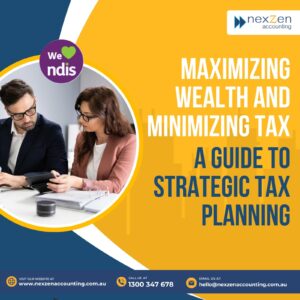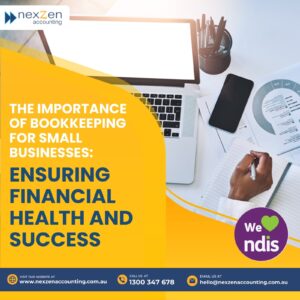Running a small business is often difficult. It’s much harder when you’re stressed about finances, have limited cash flow, and are struggling to juggle all your daily tasks.
In the early days of business, owners often envision success. They know that means hard work, but they expect a return for their efforts. You start work early and end work late. You’re always “on the clock” because it’s your business. There are few breaks, if any. You’re in charge of operations, management, sales, and accounting. You’re the one who sets up utilities, pays the bills, and issues paychecks.
It’s easy to get caught up in the endlessly urgent tasks and suddenly realize your cash is gone. Your bank balance isn’t enough to pay what you owe, and you have nearly nothing to show for all your efforts. Once you pay employees, there’s no cash left for GST, tax, and superannuation. There’s certainly nothing left to pay yourself. Where did all your money go?
What’s the solution? Should you close up shop and consider yourself a failure? Should you buckle down and work even harder, hoping you somehow crank out a meager existence next month?
We have a better solution. nexZen Accounting works with small businesses just like yours. In fact, we specialize in helping new business owners get their organisations up and running. Those early days are some of the most difficult for any entrepreneur. You’re absolutely not alone, and you’re not a failure. Cash flow is a common problem for new businesses, though it’s rarely discussed. We can help you create better cash flow, get ahead on your accounting tasks, and gain increased financial stability. Here’s how.
Cash Flow Reporting
Cash flow is the way money moves in and out of your business. Cash flow reports are one of the most important accounting tasks for a new business owner. They show you where your money went, where it’s going, and where it’s coming from.
Cash Flow Management
Cash flow management works hand-in-hand with cash flow reporting. In fact, cash flow reporting is just one small part of cash flow management. The report helps you see the numbers in one easy-to-read format. Cash flow management takes the task one step farther, helping you stay on top of your finances. We help you see potential problems and fix them. We also help you better manage your bills, pay your suppliers on time, and, perhaps most importantly, pay yourself.
Cash Flow Forecasting
Cash flow forecasting is another part of cash flow management. We’ll help you read and understand the cash flow report. You can predict how much cash you’ll have in the future, better manage your expenses, and know exactly where you stand financially. That’s much better than paying bills and hoping there’s a little something left over for yourself at the end of the month. Are you sick of being surprised when you run out of money? That’s why cash flow forecasting is so important. You’ll never be surprised by a “zero” bank balance again. When you know where you stand financially, you can do something about it.
Budgeting
No one likes budgeting, but it’s part of running a successful business. While a business budget is similar to a personal budget, there’s a lot more to it. We can help you identify all your sources of revenue, organize your fixed expenses and create a calendar of due dates, anticipate your variable expenses, create a savings fund for emergency expenses, and create financial reports with all of this information organized and simplified.
Actual vs. Budget Reporting
So, what happens if you spend more than your budget allows? We can tell you that, too. We will help you analyze your actual spending versus your budgeted spending. With this comparison, we can help you spot discrepancies, analyze your spending trends, and find better ways to save money. If you spent more than you earned this month, we can help you fix the problem before it gets out of hand. Our goal is to help you sleep better at night, wake up refreshed the next morning, and feel able to tackle the day with confidence.
Business Plan
If you started a business with no direction, little confidence, and plenty of dreams, you’re not alone. Many successful business owners do the same thing every day. We find that it’s much easier to properly run and manage an organisation if you have a good plan, though. With a solid business plan, you will know exactly where you’re headed and how to get there. You can also apply for loans, impress potential investors, and outline your short-term and long-term goals.
Feel Better, Sleep Better, and Be Happier with nexZen
Sometimes clients ask us why we run our company the way we do. We aren’t just accountants. We don’t just sit behind a desk all day and crunch the numbers. We genuinely care about our clients, and we want them to succeed. If your finances are in disarray, you can’t possibly know whether you’re flying or falling. If you feel like an anxious ball of nerves, that’s why.
We love to get to know our customers first. What’s your biggest concern? What would make you feel better? If you don’t know what you need, we’ll help you figure it out.
Some of our clients don’t know anything about accounting, and that’s okay. We can start at the very beginning and walk through the process together. We’re accounting experts, but we’re people-focused, too.
Other clients know exactly how to crunch the numbers, but they can’t seem to get ahead, no matter what they do. We can help with that, too. In fact, we created a guide to help boost your cash flow immediately. If you want practical, hands-on experience with business management and cash flow budgeting, nexZen is exactly what you’re looking for.
We help business owners get ahead financially and prepare for the future. Our main focus? Creating win-win strategies that give you freedom from stress and worry. Ready to get started? Book a discovery call today.










